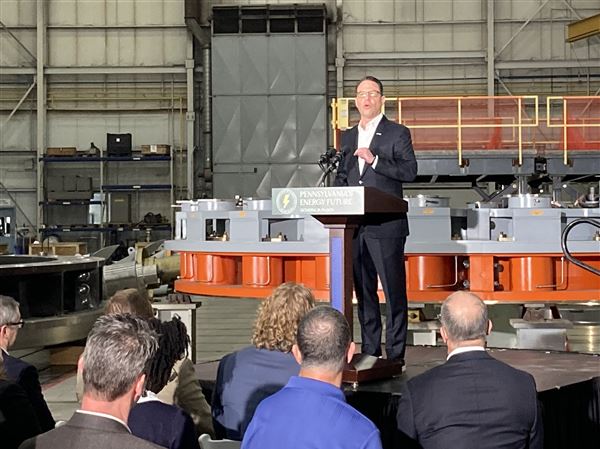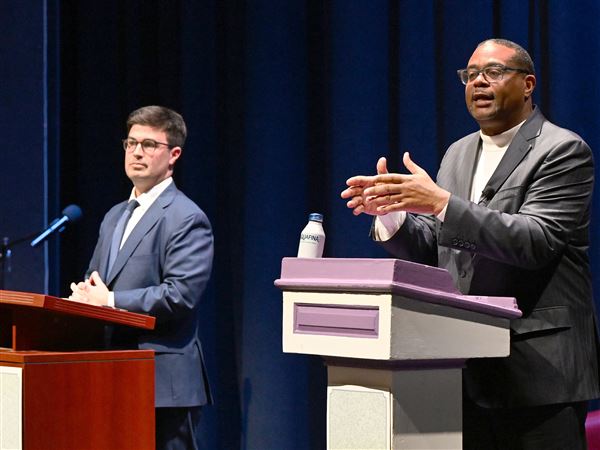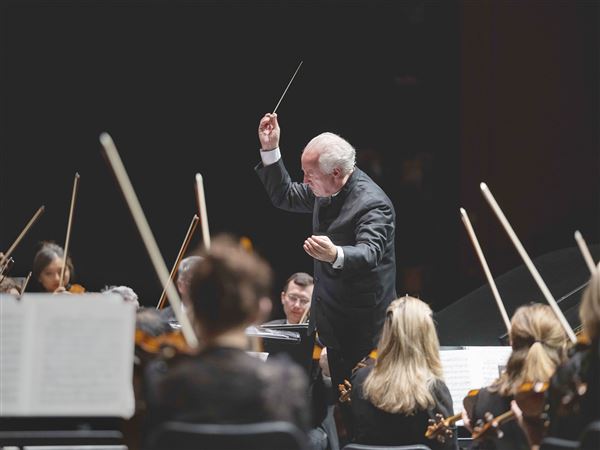Mellon Square is noted for bringing the first blade of grass to Downtown Pittsburgh, a factoid that dramatizes how much the city has changed in the 59 years since the square first opened.
Trees, shrubs, flower beds and grand fountains today don't create the unique splash that attracted untold numbers of families with cameras to the site in the late 1950s and 1960s. But after a few renaissances, Pittsburgh realized what those first blades signified.
More than 200 people turned out for ceremonies Thursday, when the square reopened after a two-year restoration, to venerate its historic and architectural significance, or just to eat their lunch.
One piece remains to be done -- restoration of the Smithfield Street storefronts, with interpretative panels about the square. Architects Pfaffmann + Associates will work with the Pittsburgh Parking Authority and the Pittsburgh Parks Conservancy on that project this summer.
The parks conservancy has an agreement with the city to maintain the square and a $4 million fund to do that. The square's restoration and maintenance fund together came to about $10 million, funded by several foundations and corporations.
Susan Rademacher, parks curator for the conservancy, said another $1.2 million will be raised for Smithfield Street interpretive signage, lighting and storefront restorations.
Mellon Square and the parking garage below it were the first such combo in the nation, but the square was meant to be more than historic.
"This was one of the big initiatives of Pittsburgh's first renaissance," said Bill Flanagan, executive vice president of the Allegheny Conference on Community Development. "The square was intended to be a catalyst for investment."
In the early 1950s, financier Richard King Mellon led the effort, with Mayor David Lawrence and the Allegheny Conference, in building the square. Landscape architects Simonds and Simonds and architects Mitchell and Ritchey worked together to create what was essentially a sunken building with a green roof.
"It's hard for us to imagine today the concern civic leaders had when they realized if they didn't clean up the city, Pittsburgh would have a hard time competing," Mr. Flanagan said.
Mellon Square's restoration has been similarly catalytic, said Jeremy Waldrup, executive director of the Pittsburgh Downtown Partnership. He cited pending investments of $200 million "just on this square," in buildings that several years ago were running on empty.
"That $200 million will mean 487 new hotel rooms, 900,000 square feet of office space, 220 new residential units, 450 new parking spaces and 60,000 square feet of retail," he said. "We look forward to thousands more visitors and workers enjoying Mellon Square."
A Hotel Monaco is slated for the James H. Reed Building, an Embassy Suites for the Oliver Building and apartments in a portion of the Regional Enterprise Center -- the former headquarters of Alcoa.
Over the 40,000-gallon roar of the central fountain, which had stopped working almost a decade ago, Susan Englert of Lawrenceville said she attended the ceremony because she had read about the square "as a Modernist masterpiece and landmark," she said. "I had never noticed it" from Smithfield Street.
The cascading fountain that used to get people's attention on Smithfield had stopped working years ago, too. It now recirculates 10,000 gallons of water. The central fountain's water is also recirculating.
In 2009, when the city's budget had proved too lean for the square's regular maintenance, the Richard King Mellon Foundation and BNY Mellon paid for a preservation, interpretation and management plan around a team that included the parks conservancy, the city and the parking authority. They hired Patricia O'Donnell, whom Mr. Pfaffmann called "a superstar in historic landscape preservation," to lead the restoration.
Becky Jarold, a designer who has worked in buildings around the square, would eat her lunch in it even during its years of neglect.
"It's always been a wonderful place to eat lunch," she said. "It's a classic. But I watched it for many years" before the restoration "and I so appreciate the hard work the construction and crafts people did, in the coldest of weather; painstaking things."
Richard Margerum, a retired architect, worked Downtown and ate his lunch several times a week in Mellon Square when it looked like it was designed to look. He returned Thursday to eat his lunch and listen to the rededication.
Sitting on one of the granite benches, biting from a sandwich, he tapped the rustic terrazzo with his toe and said, "This is the same pavement." Looking around, he added, "Oh yes, this is a lot of preservation."
From PG archives: The groundbreaking ceremony for Mellon Square Park, 1955
First Published: May 29, 2014, 4:26 p.m.
Updated: May 30, 2014, 3:25 a.m.

















